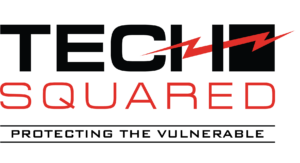Technology has long been considered a necessary cost burden rather than an investment that can add value throughout the organization. Still, organizations are spending an average of just over 3% of their revenues on IT, with the biggest spenders being companies in the banking and securities sectors. By contrast, manufacturing and construction spend the least, and these industries have traditionally been among the slowest to innovate.
When setting a realistic IT budget, the first thing to consider is your business goals in order of priority. At the same time, business leaders also need to remember that adaptability to change is itself a business imperative in an age of constant technological evolution. You can also start by comparing your IT spending to that of your competitors. Then, you’ll need to break it down to the main areas of spending.
Personnel
Human resources account for the biggest expense when it comes to IT. It doesn’t help that expertise is in short supply, particularly in critical areas like cybersecurity. With CIOs and other executive-level IT staff all commanding salaries in the six figures, small businesses often find it impossible to build a full-fledged in-house IT department.
Fortunately, there are many ways to greatly reduce the cost of technical expertise. By partnering with a managed IT services provider (MSP) and hiring consultants for one-off projects, you can tap into valuable technical expertise on demand. Outsourcing IT management and maintenance can also proactively guard against unpredictable expenses such as those associated with repairs and upgrades.
Software
Enterprise software licenses traditionally cost thousands of dollars, and customers would often have to pay again for each major upgrade. Software life cycle management is another major cost since it’s important to ensure you’re using software that’s still within its support life cycle.
Fortunately, the now highly popular Software-as-a-Service (SaaS) model has made expenses associated with software far more predictable than before. With SaaS, businesses can pay a monthly subscription for software that’s proactively supported and always up to date. In most cases, software licenses are priced per user, which also makes budgeting easier.
Hardware
Aside from personnel costs, hardware investments also take a large portion of the IT budget. Servers and in-house data centers can easily run into many thousands of dollars, while endpoints like workstations, laptop computers, and mobile devices all add to the expense. There are also regular upgrades and maintenance to think about.
Today, hardware is much less relevant than it used to be. Many companies now use the cloud to build software-defined computing architectures in which resources may be accessed using any internet-connected device. Instead of buying their own hardware, businesses can now rent their resources from cloud vendors.
Services
IT services have traditionally been one of the most difficult areas to budget for, since they are highly unpredictable. For example, businesses relying on break/fix support would have to call in a technician to repair problems, and the invoices would keep on piling up until a resolution was found. Factor in indirect costs such as downtime, and expenses become wholly unpredictable.
Today, the industry has shifted towards a proactive support model whereby cloud services are maintained, monitored, and upgraded by the vendor at no additional expense. As we edge ever closer towards the age of everything-as-a-service, IT services account for an ever-larger portion of the IT budget, but at least they’re predictable and without unpleasant surprises.
Infrastructure
Perhaps the most overlooked area of IT budgeting is the underlying infrastructure. In-house data centers need proper climate control, electrical supplies, and cabling, while every business needs a fast and reliable internet connection. Wireless networks add some extra requirements such as range extenders and signal boosters.
While migrating to the cloud substantially reduces the need for in-house infrastructure, offices still need proper cable management, and every cloud service still needs an endpoint to access it. Fortunately, thanks to cloud computing, many businesses can now be location-independent, letting employees work from home or on the move, thus greatly reducing costs.
Tech Squared provides IT services and solutions that reduce stress and add value to every area of your business. Call us today to find out how.


